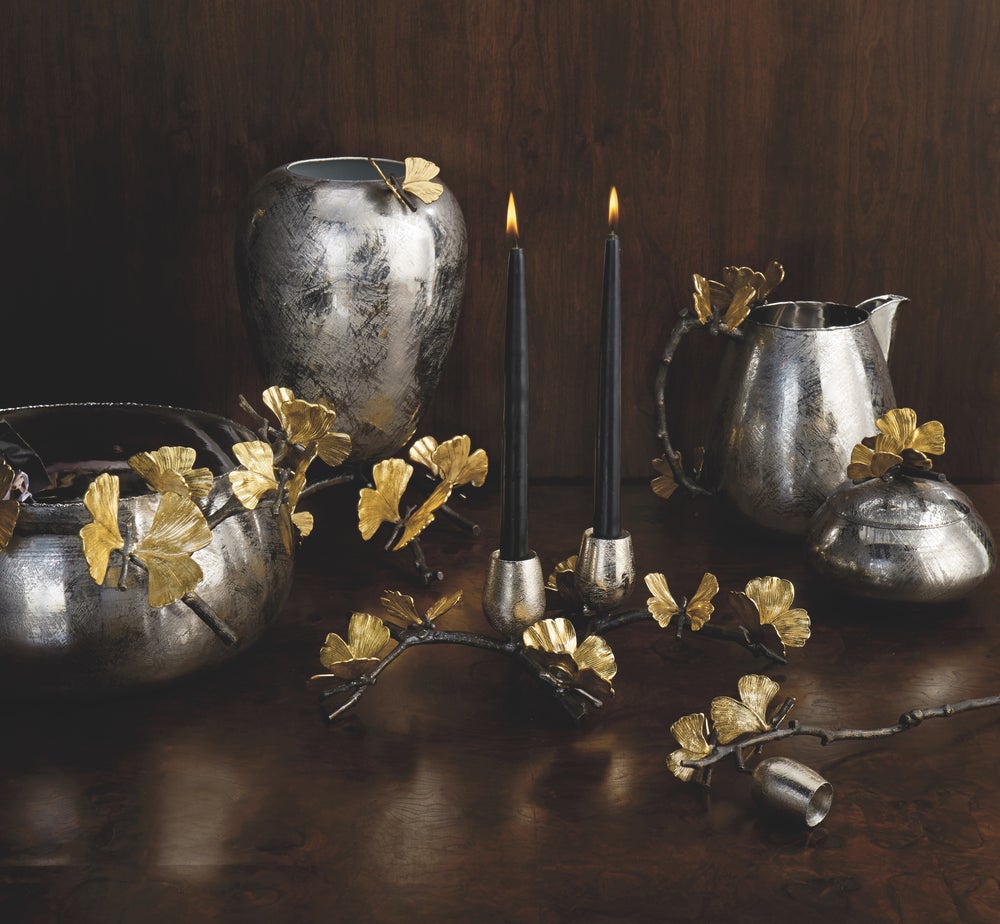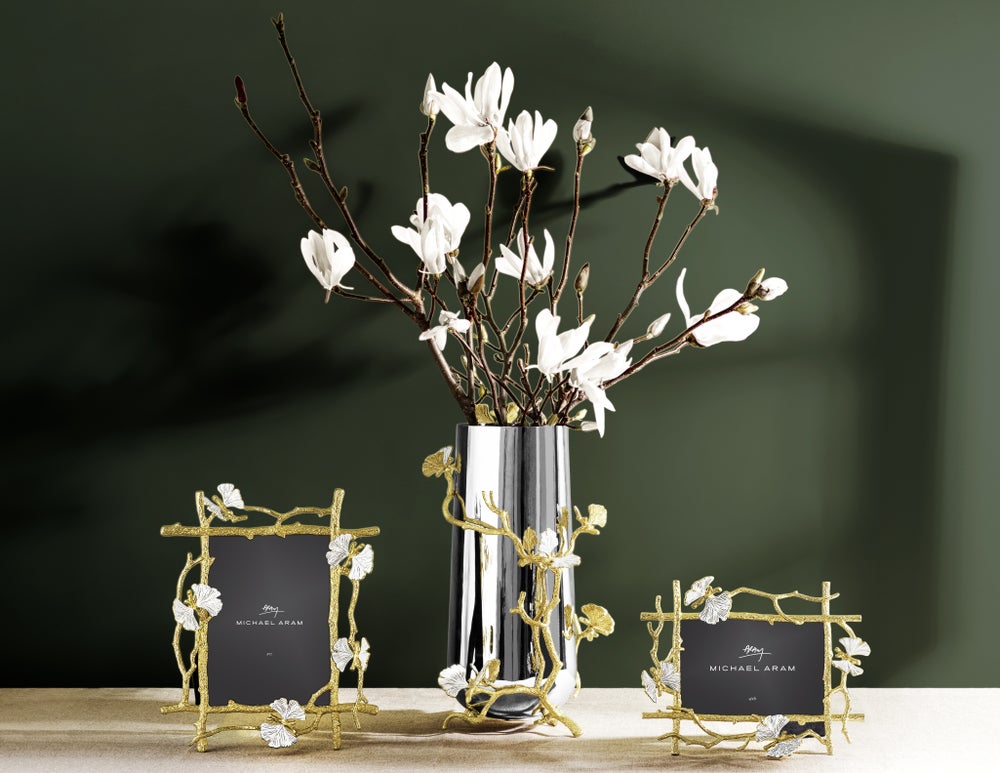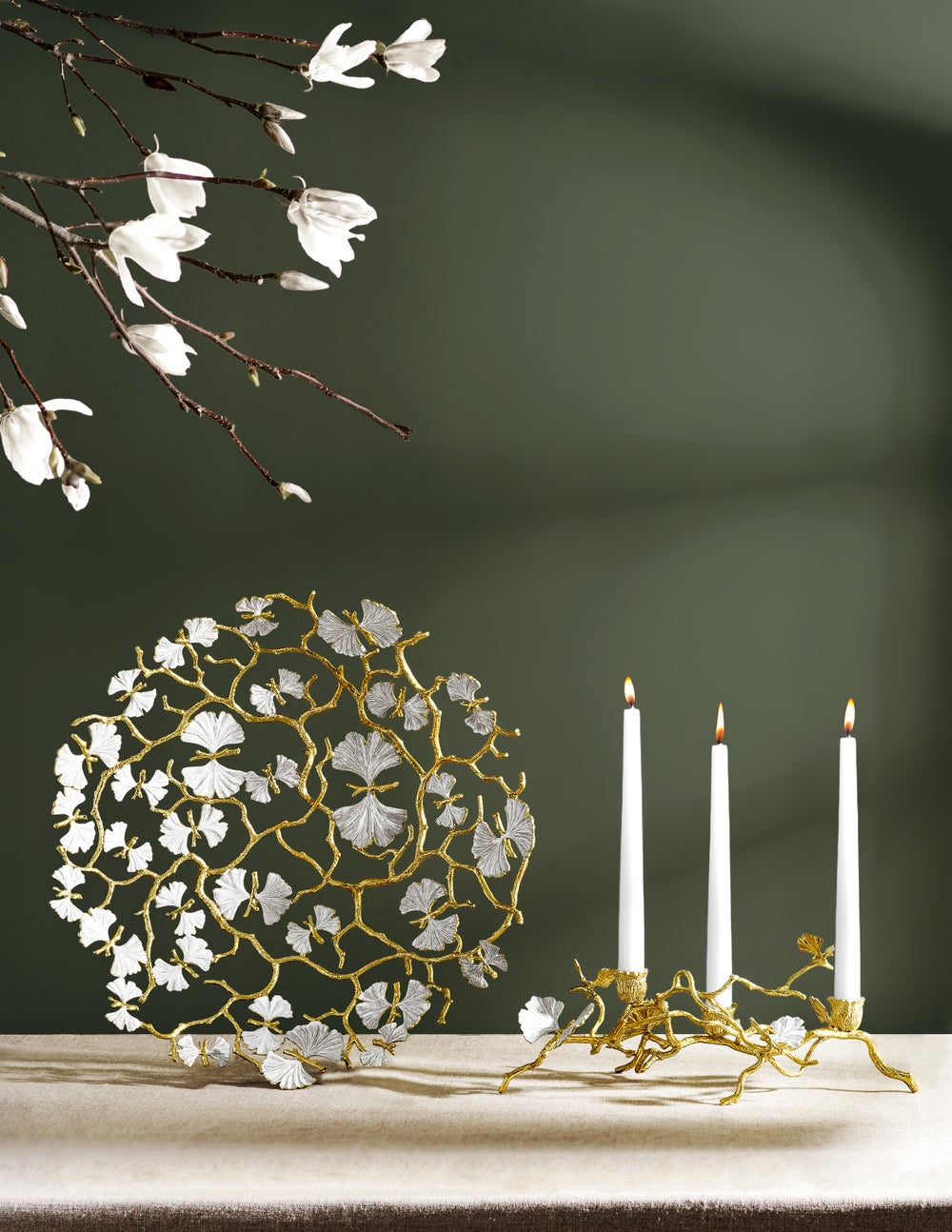
In 1989, a 25-year-old Michael Aram lived in a studio apartment on Christopher Street in New York City, where he designed books and posters for the Metropolitan Museum of Art by day and drew and painted by night. During this time, the young artist befriended several people from New Delhi, India, and decided to go to them — a decision that modified his life and led to the founding of the luxury home and jewelry brand of the same name.
Image Source: Courtesy of Michael Aram
When Aram arrived in India and saw local craftsmen at work, “It was like going back to biblical times,” he says. Aram was particularly fascinated by the metalworkers, inspired by their craftsmanship—regardless that the objects they created were basic and utilitarian.
“I just thought, I want to work with these people and create beautiful and artistic objects,“Aram explains. “But because they were creating functional objects, my head went towards decorative art — How to make a bowl beautiful and a forged object functional?“
So Aram learned the craft while he was in India and assembled a five-piece collection, including servers with twigs found on his morning walks, forged in brass and plated in silver, and bowls hammered from stainless-steel with hand-cut edges and “big hammer marks.” He took the pieces back to New York, and while some of his friends in the city urged him to sell his work, others weren’t so impressed.
“My friends in India would make fun of me and say, ‘Oh, you and your rotten metal. It looks like something cows would eat,’” Aram says. “They were very lumpy, handmade, and artisanal.” At the time, the prevailing design aesthetic was “high-tech,” Aram explains. “Everything was brushed metal, industrial looking.” The handmade element “that’s ubiquitous in today’s design world” was not fashionable.
 Photo Credit: Courtesy of Michael Aram. Elements from the Butterfly Ginkgo collection launched in 2007.
Photo Credit: Courtesy of Michael Aram. Elements from the Butterfly Ginkgo collection launched in 2007.
“Michael, if you can do it, I can sell it.”
Still, even with just $2,000 to his name, Aram decided to take heed to his supporters and give the enterprise a try. He found a sales rep in SoHo who worked with designers who made metal art, furniture, jewelry and handbags. There were about five artists in the group, Aram says.
“AND [the representative] He told me, ‘Michael, if you can do it, I’ll sell it,'” Aram recalls.
So Aram started working. He emptied $2,000 from his checking account and went to India; he spent $200 on a layover in Paris, arrived with $1,800 in his pocket, and started working. He made various quantities—“50 of this, 20 of that, 10 of that”—and shipped them to New York.
The sales rep took the pieces to a design exhibition, for which Aram flew back. By the end of the event, they’d a lot of orders. One piece even made it onto the cover Neiman Marcus Magazine.
“I was 25. It was terrifying. But we did everything; we sent everything.
With an order for 16,000 sets of cutlery waiting to be fulfilled, Aram needed cash to create his designs. His parents were able to guarantee him a loan of about $50,000. “I was 25,” Aram says. “It was terrifying. But we did everything; we shipped everything. And [after that point]We never had to borrow money again. We just invested it back into the business.”
This strategy helped the company achieve the global recognition it enjoys today, approaching its thirty fifth anniversary. The brand not only attracted a significant audience, including the English royal family and the Pope, who was donated the sculpture of Noah’s Ark in 2016, but its products will also be found in the dining rooms of Four Seasons hotels and in major retail stores including Neiman Marcus and Bloomingdale’s.
Additionally, the company has flagship stores in New York, Miami and Canoga Park, California, and is currently expanding with a recent center in Valencia, Spain.
 Image Credit: Courtesy of Michael Aram. Parts of the Butterfly Gingko Gold collection launching July 2024.
Image Credit: Courtesy of Michael Aram. Parts of the Butterfly Gingko Gold collection launching July 2024.
“I run my business the way my grandfather would have run his.”
Although Aram has at all times loved business and viewed it as a project, “creating something out of nothing,” he calls himself an “accidental entrepreneur.” He’s been in business for greater than three a long time, but he still considers his approach “very unconventional.” “I run my business the way my grandfather would have run his business, the old way,” Aram says. “It wasn’t just about leverage and partners and 3PLs and no ownership; it was a very old way of doing things.”
“I like owning things,” Aram adds. “I like managing things and I like being as vertical as possible. I don’t know if that’s a smart move. It’s just the way I did it.” The 100% foreign-owned company still operates in India, which Aram considers “a very important heart of the business” to at the present time.
According to Aram, many brands put marketing and PR on a pedestal, but he has at all times been driven by goals, believing that the product will speak for itself and tell a story, even a long time from now.
For a time, his office was above a New York store, and he “loved hearing what customers said about the products,” and how sometimes when he introduced himself, people would confer with themselves as “collectors” moderately than “customers.” “I don’t tell them to,” Aram says. “That’s how they identify. Because they feel there’s something special about it.”
“So at some level, anyone can be an entrepreneur now.”
“I never thought for a second when I was making those five fun songs that this would be my life,” Aram says. “But India has taught me so much and taken me so far.” Aram attributes much of his success to starting out as a young entrepreneur who “didn’t know any better” and was willing to push forward despite significant obstacles—reminiscent of the undeniable fact that he couldn’t get a checking account in India or legally operate a business in the country before economic liberalization.
“Ignorance was my best tool,” Aram admits. “Ignorance and happiness.”
 Image Credit: Courtesy of Michael Aram. Parts of the Butterfly Gingko Gold collection launching July 2024.
Image Credit: Courtesy of Michael Aram. Parts of the Butterfly Gingko Gold collection launching July 2024.
These days, it’s harder for an unknown designer to interrupt into retail. Aram says stores aren’t capable of be as agile or take as many risks as they once were, which suggests the barrier to entry is high. But where one door could also be closed, Aram sees others that are wide open to budding entrepreneurs—online marketplaces like Etsy, Amazon, and Facebook Marketplace.
“You can do [something] in your kitchen and sell on your computer, or maybe never leave your home,” Aram says. “So on some level, now anyone can be an entrepreneur, and I think that’s so amazing.”
Want to see more stories like this? Join Entrepreneur+ and get full access to our site for lower than $1 a week.

